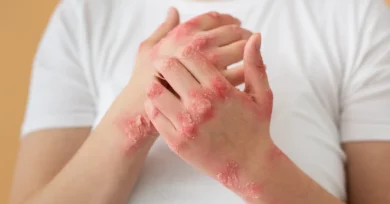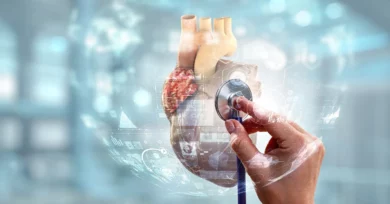If you love looking at some of the best healthcare innovations, then Red Light Therapy is definitely one of them. It is a popular tool that has emerged in dermatology for addressing various skin concerns and conditions. It shows its effects on inflammation, and the cell functions have expanded its potential treatment applications for autoimmune diseases, chronic pain, and many other health conditions. Let us dig deeper into this topic.
Red Light Therapy- An Overview:
Well, folks, if you are into skincare and want to address your regular skin problems, then you must look at red light therapy. For those who do not know, the therapy is a treatment that uses low wavelengths of Red Light or near-infrared light to treat a variety of health and skin conditions. It’s also known as:
- Cold laser therapy
- Biostimulation
- Soft laser therapy
- Photonic therapy
- Low-level laser therapy (LT)
- Low-power laser therapy (LPLT)
- Photobiomodulation (PBM) therapy
It is important to note that there are certain conditions which require the red light therapy, and it is not applicable to all skin conditions. So, in the next section of the article, we will be discussing some of the skin conditions that can be treated by the therapy. So, switch to the next section of the article quickly!
Conditions Treated by Red Light Therapy:
In this section of the article, we will be listing some of the skin conditions that can be treated by Red Light Therapy. Some of the conditions which are treated by red light therapy are:
- Dental issues
- Dementia
- Nearsightedness and eye diseases
- Skin conditions (e.g., psoriasis, eczema, vitiligo, acne)
- Scarring and wound healing
- Aging-related skin concerns (e.g., fine lines, wrinkles, sun damage)
- Carpal tunnel syndrome
- Arthritis
- Chronic pain and muscle soreness
- Asthma
Folks, these are some of the skin conditions which can be treated by the red therapy. Before we tell you about the working procedure of red light therapy, let us give you a brief history of the same.
Brief History:
Folks, the lower laser therapy was first discovered in 1967 by the Hungarian physician Endre Mester. In a series of mouse studies, he noticed that the hair on mice shaved for unrelated surgeries would grow back faster when exposed to laser light. He also saw rapid wound healing in those mice.
From then on, he began using the red helium–neon (HeNe) laser on his human patients to treat skin conditions and skin ulcers that weren’t healing.
Modern therapies also focus on red light therapy’s potential for anti-inflammatory, pain-reducing benefits and healing. NASA’s more recent work with red light has focused on wound healing after one mission found that the red light was a more powerful photomedicine than any other color light. It’s a pretty fascinating discovery!
Now that you have a good understanding of the history of red light therapy let us head to the next section of the article, where we will be discussing, in brief, the working mechanism of red light therapy.
Working Mechanism of Red Light Therapy:
If you are already interested in getting some of your skin conditions treated by Red Light Therapy, then this section of the article will help you gain a deeper insight into the therapy as we will be discussing the way the therapy works. Red Light Therapy works by exposing the body’s tissues to wavelengths of red light. Those wavelengths are then absorbed by mitochondria, the powerhouses of the cells, which boosts energy production and levels of adenosine triphosphate (ATP).
When the body gets access to more energy, the other processes become more efficient. This cellular energy boost can touch everything from your body’s healing processes to anti-inflammatory responses to collagen production. The Red Light Therapy session usually takes 20 minutes.
Benefits of Red Light Therapy:
In this section of the article, we will be discussing some of the benefits of Red Light Therapy. So, keep reading this section of the article to know more!
Chronic Pain:
As Red Light Therapy helps in treating arthritis, it also helps in treating chronic pain because of the ongoing inflammation. The different types of pain that red light therapy might be of help include:
- Chronic low back pain
- Fibromyalgia
- Muscle pain from overexercise or sports injuries
- Tendon pain from conditions like Achilles tendinitis
Arthritis:
Red Light Therapy is very helpful in treating arthritis. Photobiomodulation’s anti-inflammatory effects may reduce the swelling in the joints and tenderness in osteoarthritis and rheumatoid arthritis sufferers. Folks, it is important to note that autoimmune conditions like rheumatoid arthritis require a multi-faceted approach. Avoiding food triggers like nightshades may also be essential to your treatment plan puzzle.
Skin Conditions:
Red light therapy is definitely helpful when it comes to treating skin conditions. This includes psoriasis, eczema, and pigmentation disorders like vitiligo. It may also be a particularly effective treatment for mild to moderate acne. A study has shown improvements in acne breakouts of over 36% after 2 weeks.
Asthma:
Red light therapy is also helpful in treating asthma. Studies have shown that low-level light therapy may also have a positive effect on airway irritation, which is due to severe asthma. This is likely due to its anti-inflammatory effects on your lungs. The protocols include treating conditions such as allergies and skin conditions, which are eczema in asthma sufferers. They are proven effective in the long run.
Scarring:
This is another problem which can be treated by the red light therapy. It effectively helps in reducing post-operative scarring along with other fresh scarring by simply improving the skin’s ability to stretch after trauma.
This Therapy also improves symptoms of scleroderma and other types of skin fibrosis. This autoimmune disease of the skin causes problems with connective tissues, such as skin tightening and hardening from an overproduction of collagen.
Cancer Treatment Side Effects:
Red light therapy helps in treating the side effects of cancer, but it does not reduce the need for aggressive cancer treatments. However, it may reduce the pain which is associated with them. A study has shown that there is a reduction in pain of oral lesions when combining this light therapy with oral cancer treatments.
Dental Health:
Folks, if you are facing any kind of dental health issues, then you can consider red light therapy for seeking treatment. The Low-level laser therapy’s effects on pain reduction may be beneficial for facial as well as dental pain. Patients who have temporomandibular disorder (TMD, also called TMJ) may feel some relief from the condition with regular sessions of the therapy.
Hair Growth:
The lower-level laser therapy also helps in promoting hair growth, and this is particularly for men who have androgenic alopecia, a type of hair loss. This may be due to its effects on scalp health and also on the hair growth cycles.
Now that we have discussed some of the benefits of Therapy, you must be thinking about whether the therapy actually works or not. So, to get the answer to the question, head to the next section of this article.
Does Red Light Therapy Work?
The research has suggested that red light therapy may be a safe, effective treatment for various health applications. It’s, however, important to note that therapy in all forms is typically a secondary treatment or an alternative that one can consider. The therapy works best alongside other therapies, medications, or treatments. Keeping that in mind, more research is needed to understand the benefits. What we know so far is promising, but no single therapy will be able to replace a holistic approach to your health.
Conclusion:
Red Light Therapy is a really helpful treatment when it comes to treating many ailments, and the tool is widely used in the healthcare sector as well. In this article, we have briefly discussed the therapy, and its working mechanism and have also discussed briefly its benefits and added an additional section about its effectiveness. That’s all, folks; I hope the article helped you get all the information you needed.
Read the latest healthcare blogs here.
Similar posts:
NAD+ IV Vitamin Therapy: Innovative Approach to Wellness
10 Most Effective Essentials to Make Life Easier!






